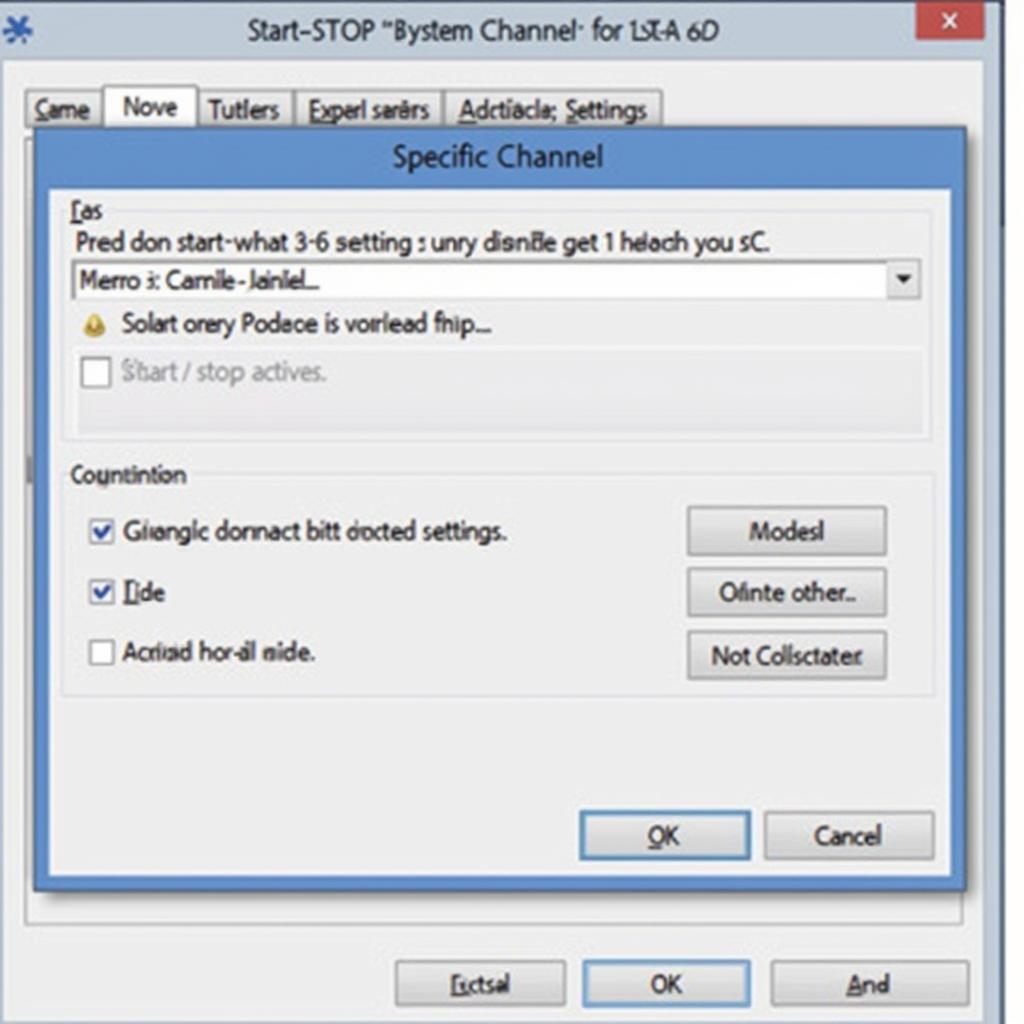VCDS functions are the gateway to unlocking the full potential of your Volkswagen, Audi, Seat, or Skoda vehicle. Whether you’re a seasoned mechanic, a DIY enthusiast, or simply curious about your car’s inner workings, understanding VCDS functions is crucial for diagnostics, customization, and maintenance. This guide will delve into the world of VCDS, exploring its various functions, benefits, and practical applications.
VCDS, or Vag-Com Diagnostic System, is a powerful software tool that allows you to communicate directly with your car’s control modules. Think of it as a universal translator for your vehicle, enabling you to access a wealth of information, perform diagnostics, and even customize certain settings. From reading and clearing fault codes to adapting new components and adjusting hidden features, VCDS functions provide unparalleled control over your vehicle. Check out more about vcds lite functions.
Understanding the Core VCDS Functions
At its core, VCDS offers a range of functions categorized by their purpose. These include:
-
Fault Code Reading and Clearing: This is perhaps the most common use of VCDS. It allows you to identify the source of warning lights and diagnose underlying issues within your vehicle’s systems.
-
Measuring Values: Access real-time data from various sensors and systems, providing valuable insights into your vehicle’s performance and health.
-
Output Tests: Activate individual components, such as lights, motors, and relays, to test their functionality and diagnose problems.
-
Basic Settings: Perform essential procedures like throttle body adaptation, steering angle sensor calibration, and other component initializations. More details about calibration can be found on vcds acc calibration.
-
Coding and Adaptation: Customize various vehicle settings, including convenience features, lighting configurations, and even performance parameters.
-
Security Access: Gain access to protected functions within specific control modules, allowing for more advanced modifications and customizations.
How Can VCDS Functions Benefit You?
The benefits of understanding and utilizing VCDS functions are numerous. For car owners, it empowers them to take control of their vehicle’s maintenance, diagnose issues before they become major problems, and personalize their driving experience. For workshops, VCDS becomes an indispensable tool for efficient and accurate diagnostics, enabling them to provide superior service to their customers. Information on the essential cable for this system can be found on vcds hex v2 cable.
What are the most commonly used VCDS functions?
Some of the most commonly used functions include reading and clearing fault codes, performing basic settings, and adapting new components. These functions are essential for maintaining and troubleshooting your vehicle.
How do I use VCDS functions to diagnose a problem?
Diagnosing a problem with VCDS involves first reading the fault codes stored in the relevant control module. Then, using the provided code descriptions and further diagnostic procedures within VCDS, you can pinpoint the issue’s root cause.
Can I use VCDS functions to customize my car?
Yes, VCDS offers a wide range of customization options, from enabling convenience features like automatic locking to adjusting lighting configurations and even fine-tuning certain performance parameters.
“VCDS is like having a secret key to your car,” says John Smith, a seasoned automotive technician with over 20 years of experience. “It allows you to go beyond the surface and truly understand how your vehicle operates.”
What are some advanced VCDS functions?
Advanced VCDS functions include coding and adaptation, security access, and long coding. These functions require a deeper understanding of the vehicle’s systems and should be used with caution. Find out more about specific error codes like 00778 vcds.
What are VCDS Label Files?
VCDS label files provide detailed descriptions of the various data points and functions available within each control module. They are crucial for understanding the meaning of the information displayed by VCDS. Learn more on our page dedicated to vcds label files.
“Having access to VCDS label files is like having a detailed map of your car’s electronic systems,” explains Jane Doe, a leading automotive electronics expert. “They provide the context necessary to effectively use VCDS for diagnostics and customization.”
Conclusion
VCDS functions offer a powerful toolkit for anyone looking to understand, diagnose, and customize their Volkswagen, Audi, Seat, or Skoda vehicle. Whether you’re a professional technician or a DIY enthusiast, mastering VCDS functions opens up a world of possibilities for enhancing your vehicle ownership experience.
FAQ
- What is VCDS? VCDS is a diagnostic software for VAG group vehicles.
- How do I get VCDS? You can purchase VCDS software and hardware online.
- Is VCDS easy to use? With a little practice, VCDS is relatively user-friendly.
- What can I do with VCDS? Diagnose problems, customize settings, and perform maintenance tasks.
- Is VCDS worth the investment? For anyone working on VAG vehicles, it’s an invaluable tool.
- What if I encounter problems using VCDS? Online forums and communities offer extensive support.
- Can I damage my car with VCDS? While possible, it’s unlikely if used responsibly.
Common Scenarios
- Check Engine Light: Use VCDS to read the fault code and identify the problem.
- Airbag Light: Diagnose airbag system issues and clear fault codes.
- ABS Light: Troubleshoot ABS problems and perform component tests.
Further Exploration
Explore our other articles on specific VCDS topics, such as troubleshooting common fault codes and advanced coding techniques.
Need support? Contact us via Whatsapp: +1 (641) 206-8880, Email: CARDIAGTECH[email protected] or visit us at 276 Reock St, City of Orange, NJ 07050, United States. We offer 24/7 customer support.

